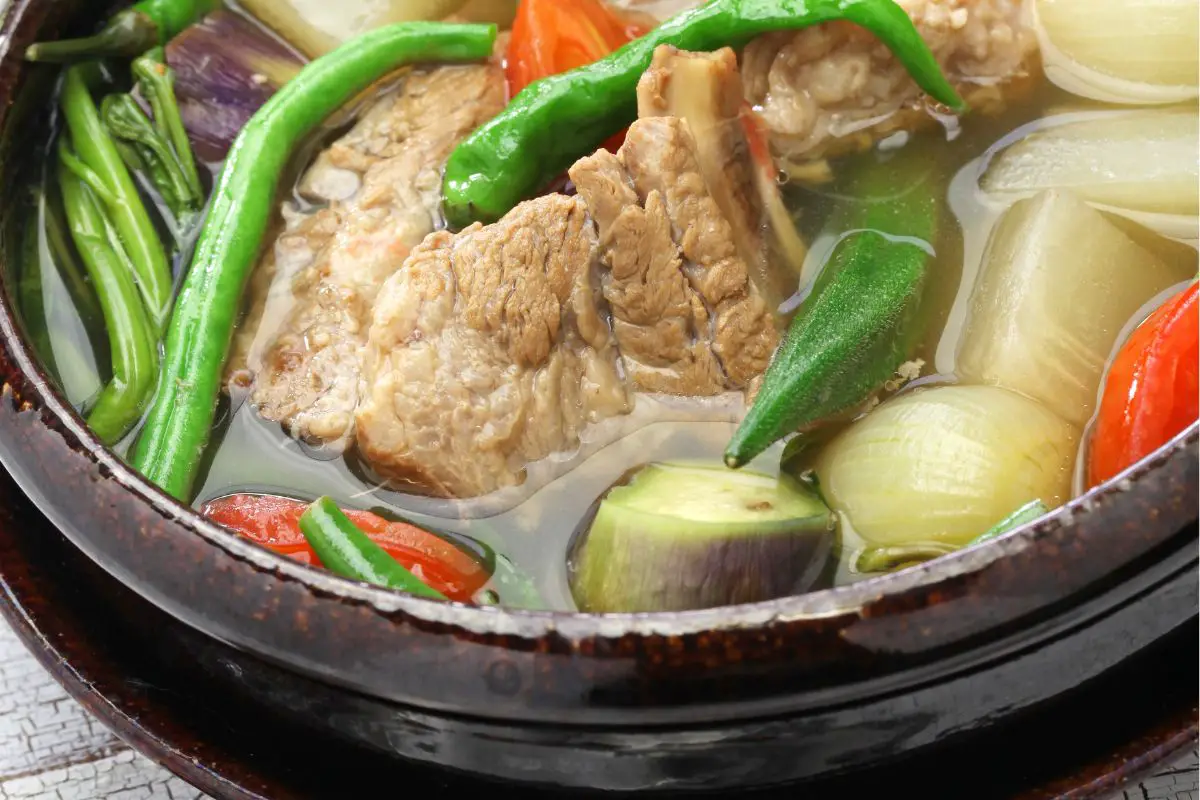Discover the Best Classic Filipino Food Recipes Today.
Savor Traditional Filipino Flavors With Easy-To-Follow Recipes
Discovering typical Filipino cuisine uses a distinct possibility to involve with an abundant tapestry of flavors and social stories. As we explore these cooking practices, one might ask yourself just how to finest bring the warmth of Filipino hospitality to their own eating table.
:max_bytes(150000):strip_icc()/Beef-Stir-Fry-with-Snow-Peas-2000-eaa56c8a960f447c816c9de642a21c70.jpg)
Overview of Filipino Food
Discovering the lively tapestry of Filipino food discloses a rich cultural heritage affected by various historical and geographical factors. The Philippines, an archipelago of over 7,000 islands, flaunts a diverse variety of tastes and food preparation strategies. The country's cooking landscape is formed by indigenous practices and the impacts of colonization, trade, and migration. Because of this, Filipino cuisine is an one-of-a-kind blend of Malay, Spanish, Chinese, and American components.
Rice acts as the keystone of Filipino dishes, often accompanied by a variety of vegetables, meats, and fish and shellfish. Using vibrant flavors is a trademark of the food, with ingredients such as garlic, onions, ginger, and soy sauce playing pivotal roles. The emphasis on communal eating shows the Filipino society of friendliness and family ties.
Street food additionally plays a considerable duty in the cooking scene, showcasing local ingredients and imaginative food preparation methods. As the Philippines proceeds to accept globalization, the blend of conventional and modern-day influences can be seen in contemporary Filipino dishes, further improving its culinary identity. Filipino food recipes. On the whole, Filipino cuisine is a testament to the country's background, culture, and lively spirit
Must-Try Conventional Meals
Filipino cuisine is ideal experienced through its typical dishes, each offering a distinct understanding right into the country's diverse cooking heritage. Among the must-try recipes is Adobo, a tasty stew usually made with chicken or pork, marinaded in vinegar, soy sauce, and garlic before being slow-cooked to perfection. Its rich and appetizing taste account represents the heart of Filipino convenience food.
An additional legendary dish is Sinigang, a sour soup usually prepared with tamarind, tomatoes, and different veggies. This dish can feature pork, shrimp, or fish, and is valued for its rejuvenating taste and heating qualities.
Lechon, an entire roasted pig, is a centerpiece at Filipino parties, recognized for its crunchy skin and tender meat. It symbolizes the festive spirit of Filipino gatherings.
For those desire something wonderful, Halo-Halo is a fascinating treat combining smashed ice, sweetened fruits, jellies, and topped with leche flan and purple yam.
Each of these conventional recipes envelops the essence of Filipino society, inviting any individual to enjoy the vibrant tastes and rich history that define the island chain's culinary landscape.
Step-by-Step Recipes
Food preparation genuine Filipino meals in the house can be an enhancing experience that brings the lively tastes of the Philippines right into your cooking area. With a variety of traditional dishes to pick from, employing detailed recipes enables both beginner and seasoned chefs to grasp the techniques and flavors important to Filipino food.
Begin by picking a recipe that intrigues you, such as adobo, sinigang, or lumpia. Each recipe often consists of a detailed ingredient checklist adhered to by clear directions, directing you with the food preparation process. Start with preparation, which may include marinating healthy proteins, cutting veggies, or measuring seasonings. This fundamental action ensures a smooth cooking experience.
As you proceed, pay attention to food preparation techniques distinct to Filipino food, such as this website sautéing (ginisa) or stewing (nilaga) These techniques can dramatically improve the deepness of flavor in your recipes. Moreover, timing is vital; adhere to the suggested food preparation times to attain the perfect appearance and preference.
Vital Active Ingredients and Tips
Regularly, the key to mastering Filipino food depends on understanding and making use of necessary components that specify its distinct flavors. Central to several meals are staples like soy sauce, vinegar, garlic, and ginger, which add to the unique equilibrium of savory, sour, and wonderful notes. Soy sauce functions as a base for sauces and sauces, while vinegar, particularly walking cane vinegar or coconut vinegar, gives an appetizing brightness that is critical in meals like adobo.
Rice is a crucial component of Filipino dishes, commonly offered along with primary training courses to soak up flavorful sauces. For a touch of credibility, choose for jasmine or long-grain rice. Furthermore, using fresh produce such as tomatoes, green beans, and eggplants boosts the recipe's vibrancy and dietary value.
Do not neglect the Discover More Here relevance of natural herbs and flavors, such as bay leaves, lemongrass, and chili peppers, which raise the taste profile. When food preparation, remember that perseverance is key-- enabling components to combine together leads to richer flavors. Finally, welcome the technique of sampling as you go; this will enable you to readjust seasonings and accomplish the excellent equilibrium that identifies Filipino food.
Offering and Taking Pleasure In Filipino Dishes
Understanding the subtleties of Filipino cuisine prolongs past preparation and components; it incorporates the means dishes are served and delighted in. The Filipino dining experience is characterized by communal sharing, promoting a feeling of togetherness and celebration. Typically, meals are presented in huge servings, enabling diners to take part in a range of tastes.
Rice, a staple in Filipino dishes, is usually served as the foundation whereupon the other dishes rest. Accompanying viands, such as adobo, sinigang, or lechon, are placed in the facility of the table, welcoming guests to offer themselves. Filipino food recipes. This method not just promotes a loosened up atmosphere however likewise motivates discussions and links amongst restaurants

Conclusion
In conclusion, typical Filipino food uses an abundant tapestry of flavors and cultural significance, welcoming exploration through its varied dishes. Engaging with dig this this vibrant cuisine not just enhances the dining experience but likewise maintains and commemorates the heritage of the Filipino people.